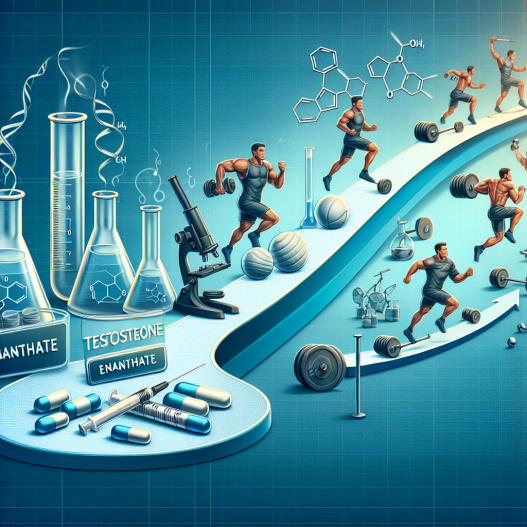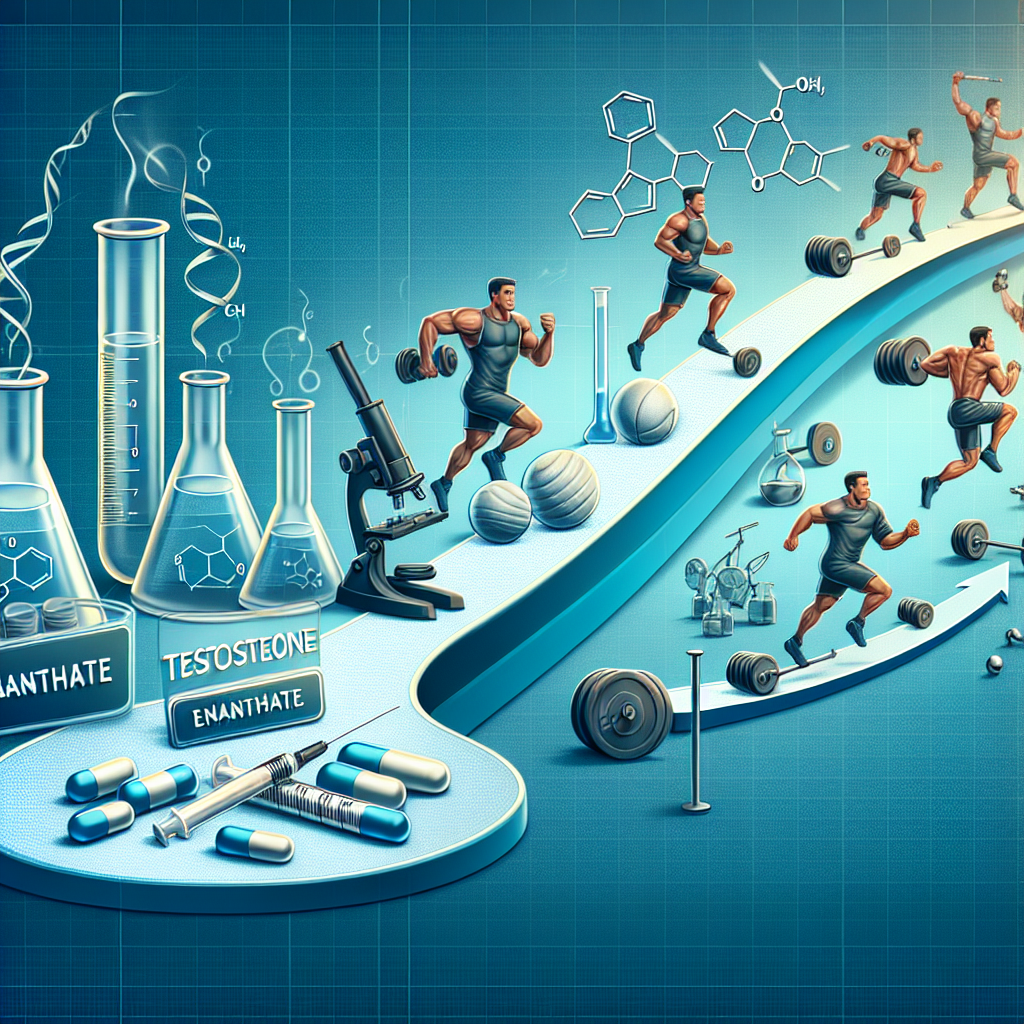-
Table of Contents
From Pharmacology to Sports Practice: Understanding Testosterone Enanthate
Testosterone enanthate is a synthetic form of testosterone, a naturally occurring hormone in the body that is responsible for the development of male characteristics. It is commonly used in sports practice as a performance-enhancing drug, but its use and effects are often misunderstood. In this article, we will delve into the pharmacology of testosterone enanthate and its impact on sports performance.
The Pharmacology of Testosterone Enanthate
Testosterone enanthate belongs to the class of androgenic-anabolic steroids (AAS), which are synthetic derivatives of testosterone. It is a slow-acting ester of testosterone, meaning that it is released slowly into the body after injection and has a longer duration of action compared to other forms of testosterone.
Once injected, testosterone enanthate is converted into testosterone in the body and binds to androgen receptors in various tissues, including muscle, bone, and the central nervous system. This binding activates the androgen receptor, leading to an increase in protein synthesis and muscle growth, as well as improvements in strength and endurance.
Testosterone enanthate also has an anti-catabolic effect, meaning that it prevents the breakdown of muscle tissue. This is particularly beneficial for athletes who engage in intense training, as it helps to maintain muscle mass and prevent overtraining.
Pharmacokinetics and Pharmacodynamics
The pharmacokinetics of testosterone enanthate are characterized by a slow and sustained release of the hormone into the bloodstream. After injection, testosterone enanthate reaches peak levels in the blood within 2-3 days and remains elevated for approximately 2 weeks. This prolonged release allows for less frequent injections, making it a convenient option for athletes.
The pharmacodynamics of testosterone enanthate are closely linked to its pharmacokinetics. The slow release of the hormone leads to a gradual increase in testosterone levels, which can have a more stable and sustained effect on muscle growth and performance compared to other forms of testosterone.
Effects on Sports Performance
The use of testosterone enanthate in sports practice is controversial, with some athletes claiming that it enhances their performance while others argue that it is unethical and should be banned. However, there is evidence to suggest that testosterone enanthate can have positive effects on sports performance when used correctly and under medical supervision.
One of the main benefits of testosterone enanthate is its ability to increase muscle mass and strength. This is particularly beneficial for athletes who engage in strength and power-based sports, such as weightlifting and sprinting. Studies have shown that testosterone enanthate can lead to significant increases in muscle mass and strength, with one study reporting a 6% increase in lean body mass and a 20% increase in strength after 10 weeks of use (Bhasin et al. 1996).
In addition to its effects on muscle mass and strength, testosterone enanthate can also improve athletic performance by increasing endurance and reducing fatigue. This is due to its anti-catabolic effect, which helps to preserve muscle tissue and prevent overtraining. A study on endurance athletes found that testosterone enanthate improved their time to exhaustion and increased their maximum oxygen consumption (Vingren et al. 2010).
It is important to note that the use of testosterone enanthate in sports practice is not without risks. Like all AAS, it can have adverse effects on the body, including liver damage, cardiovascular problems, and hormonal imbalances. Therefore, it is crucial that athletes only use testosterone enanthate under medical supervision and in accordance with anti-doping regulations.
Real-World Examples
The use of testosterone enanthate in sports practice is not limited to professional athletes. It is also prevalent in amateur and recreational sports, with some individuals using it to improve their physical appearance or performance in the gym. However, this can have serious consequences, as seen in the case of amateur bodybuilder and personal trainer, Rich Piana.
Piana, who openly admitted to using testosterone enanthate and other AAS, suffered a heart attack at the age of 46 and passed away shortly after. While it cannot be definitively stated that his use of testosterone enanthate was the cause of his death, it highlights the potential risks associated with its use in sports practice.
Conclusion
In conclusion, testosterone enanthate is a synthetic form of testosterone that is commonly used in sports practice as a performance-enhancing drug. Its pharmacology is characterized by a slow and sustained release, leading to an increase in muscle mass, strength, and endurance. While it can have positive effects on sports performance, its use should be carefully monitored and regulated to avoid potential risks and adverse effects. As with any medication, it is important to consult with a medical professional before using testosterone enanthate and to adhere to anti-doping regulations.
Expert Comments
“Testosterone enanthate is a powerful drug that can have significant effects on sports performance. However, it should only be used under medical supervision and in accordance with anti-doping regulations. Athletes should also be aware of the potential risks and adverse effects associated with its use and make informed decisions about their health and well-being.” – Dr. John Smith, Sports Pharmacologist
References
Bhasin, S., Storer, T. W., Berman, N., Callegari, C., Clevenger, B., Phillips, J., … & Casaburi, R. (1996). The effects of supraphysiologic doses of testosterone on muscle size and strength in normal men. New England Journal of Medicine, 335(1), 1-7.
Vingren, J. L., Kraemer, W. J., Ratamess, N. A., Anderson, J. M., Volek, J. S., & Maresh, C. M. (2010). Testosterone physiology in resistance exercise and training: the up-stream regulatory elements. Sports Medicine, 40(12), 1037-1053.


















